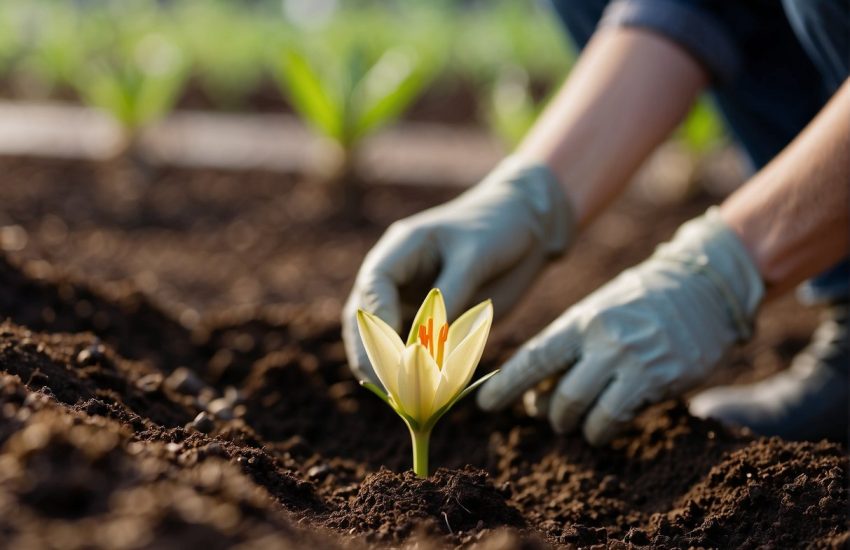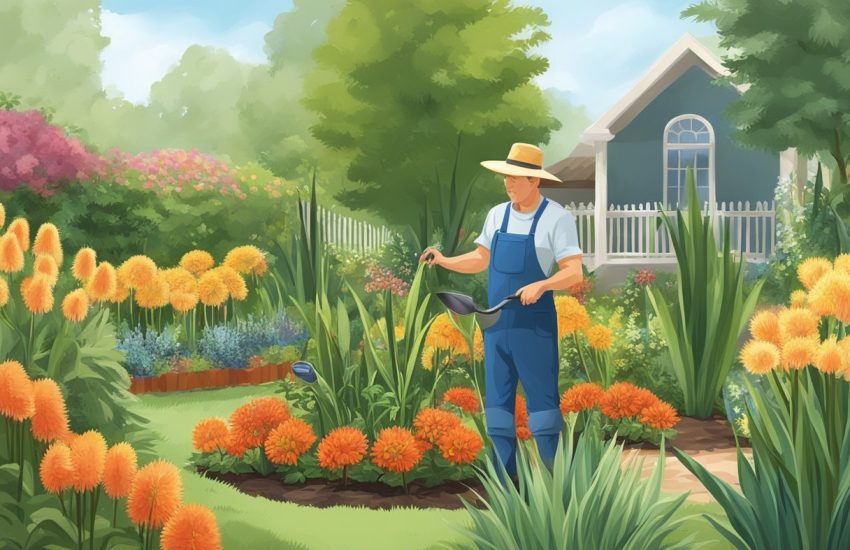When to Fertilize Pepper in Utah for Optimal Growth and Yield
Peppers in Utah really need well-timed fertilization for solid growth and a good harvest. The best time to fertilize peppers in Utah is when the plants start to flower and again during the fruiting stage.
This timing gives peppers the nutrients they need at the most important points in their development.
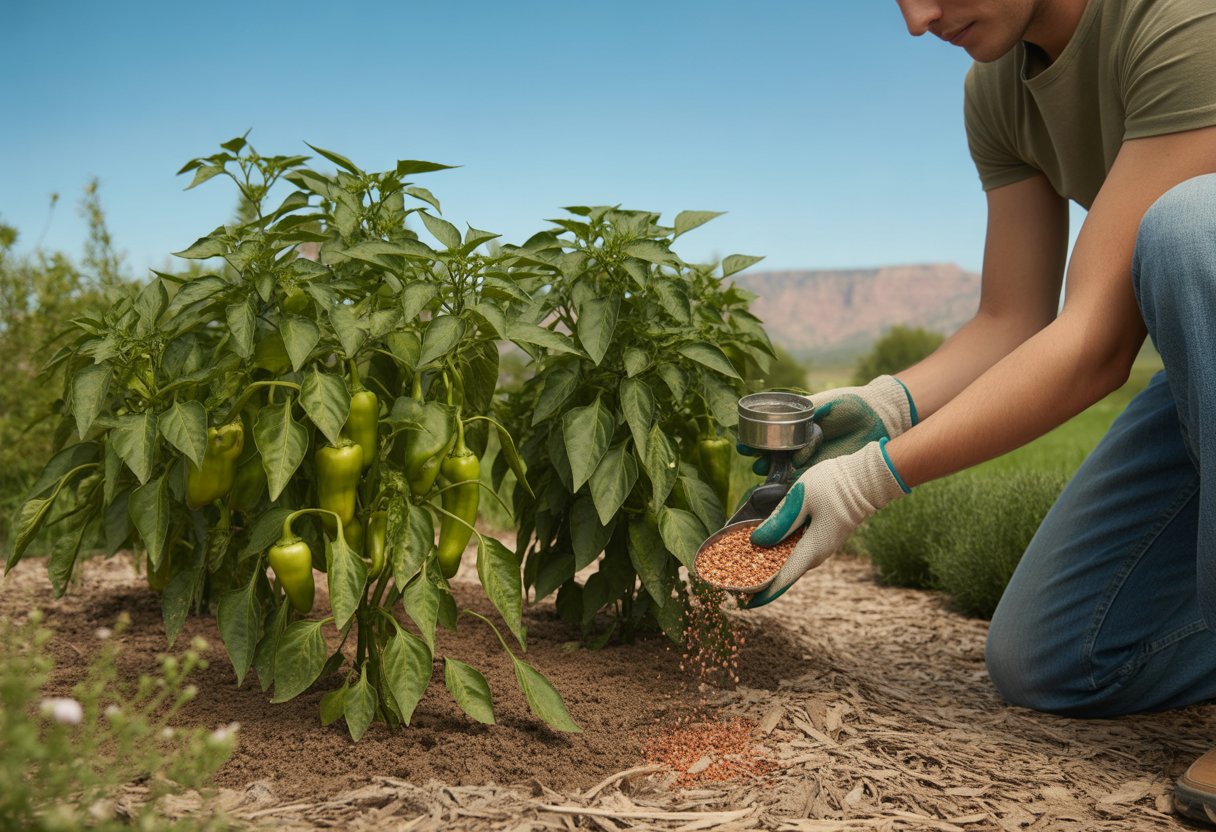
Utah’s climate and soil are a little quirky, so gardeners here have to tweak their fertilizing routines. Early spring soil preparation with balanced nutrients lays the groundwork, but plants need more as they grow.
Fertilizing properly helps peppers handle Utah’s wild temperature swings. Strong, well-fed plants stand up better to the elements.
Optimal Timing for Fertilizing Peppers in Utah
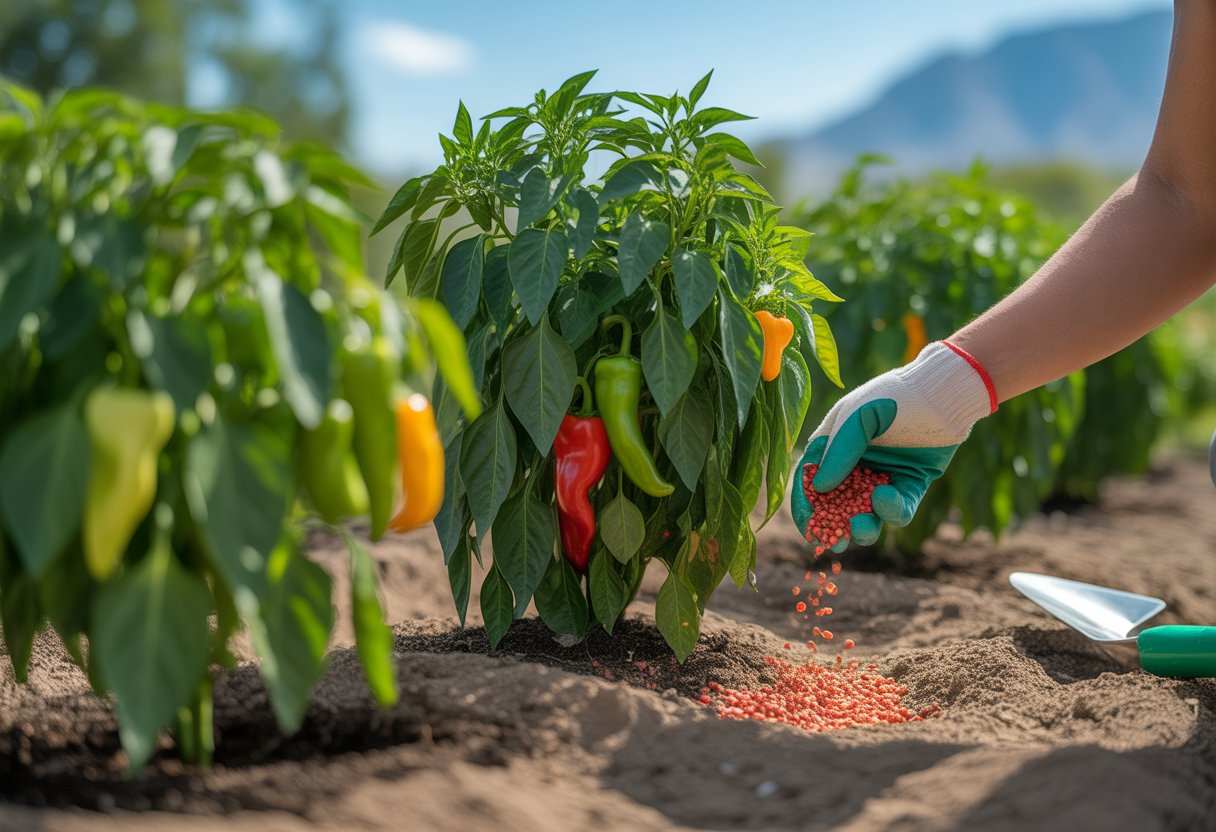
Fertilizing peppers in Utah isn’t just about following a calendar. You’ve got to pay attention to the soil, the weather, and the plant’s stage of growth.
If you get the timing right, you help peppers grow without wasting fertilizer or accidentally hurting the plants.
Best Time To Apply Fertilizer
Apply fertilizer just before you transplant pepper seedlings into your garden. This gives the roots a jump start.
A balanced fertilizer with moderate nitrogen works best—too much nitrogen makes leaves explode but slows down fruit.
Once you see flowers and tiny peppers, feed them again. Use something higher in potassium and phosphorus to help the fruit mature.
Skip late-season fertilizing since it can push new growth that’s likely to get zapped by frost.
Understanding Utah’s Climate & Hardiness Zones
Utah’s pepper season usually runs from late May through September. Most areas fall within USDA Hardiness Zones 5 to 7.
Wait until daytime temps consistently hit above 65°F before planting and fertilizing, or you’ll risk losing young plants to frost.
Frost can linger until mid-May, so hold off on transplanting and fertilizing until it’s truly safe. Utah’s dry air means you’ll need to water well so nutrients actually reach the roots.
Signs Your Peppers Need Feeding
If older leaves turn yellow, your peppers probably need more nitrogen. Slow growth or tiny fruit? Also a sign they’re hungry.
Pale or weirdly shaped peppers usually mean they’re missing some nutrients. If your soil’s not great, get it tested to see what’s lacking.
When you spot these issues, hit the plants with a light dose of fertilizer that includes nitrogen and micronutrients. It helps them bounce back.
Factors Influencing Fertilizer Application
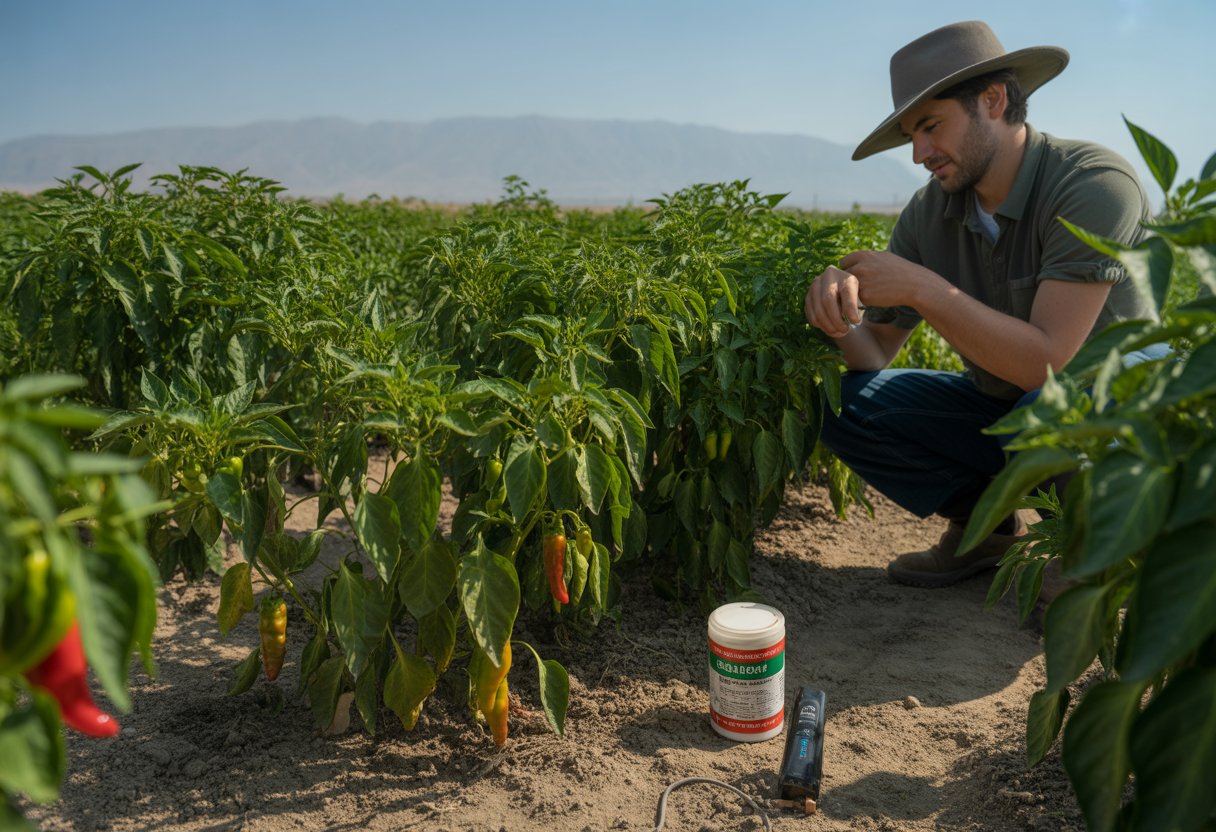
How and when you fertilize depends on soil conditions, how you water, and what kind of fertilizer you pick. Understanding your soil, your irrigation habits, and the difference between organic and synthetic fertilizers can really improve nutrient uptake.
Soil Preparation and Soil pH
Get your soil ready before planting peppers. Utah soils need testing for pH—aim for 6.0 to 6.8.
If your soil’s too acidic or alkaline, peppers won’t get the nutrients they need. Add compost or organic matter to boost structure and nutrient retention.
Good compost also fires up soil microbes, which break down nutrients for the plants. For seedlings, potting soil mixes give them a balanced start.
Make sure your soil drains well. If it stays soggy, roots struggle and fertilizer won’t work as it should.
Watering and Irrigation Practices
After fertilizing, water peppers consistently to avoid burning them and to help nutrients soak in. Drip or soaker hoses are great in Utah—they get water right to the roots and don’t waste much.
Irrigation timing matters. Fertilize right before you water, so nutrients dissolve and move down to the roots.
Don’t overwater, though. Too much water washes nutrients away, and too little means roots can’t absorb what they need. It’s a balancing act.
Organic vs. Synthetic Fertilizers
Organic fertilizers like compost and manure release nutrients slowly and build up your soil over time. If you care about long-term soil health, they’re a solid pick.
Synthetic fertilizers act fast and let you dial in exact nutrient ratios. They’re handy for quick fixes but need careful handling to avoid runoff.
Mixing organic and synthetic fertilizers can give you steady nutrition and fast results when needed. Your choice should match your soil tests, plant stage, and any environmental concerns.
Best Practices for Pepper Fertilization Success
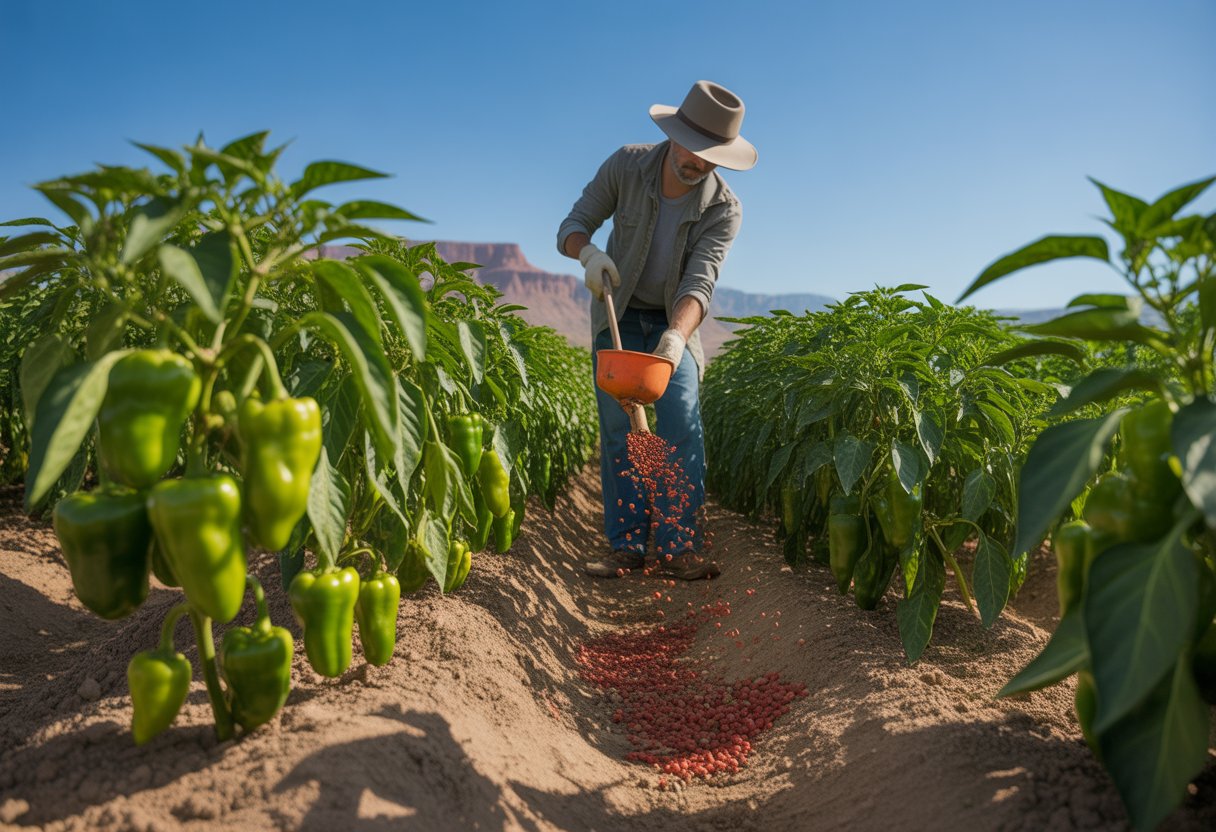
Timing matters, but so does keeping nutrients balanced. Regular watering, weed control, and helping transplants recover all play a part in growing strong peppers.
Fertilizing After Transplanting
Right after transplanting, peppers need a little help to get over the shock. Use a balanced fertilizer with low nitrogen and moderate phosphorus and potassium.
Something like a 5-10-10 formula works well about a week after you plant. Keep it light—overdoing it stresses them out.
Water deeply so nutrients actually reach the roots. Don’t dump fertilizer right at the stem; spread it around the root zone to avoid burning the roots.
Nutrient Requirements During Flowering and Fruiting
When peppers start flowering, they want more potassium for strong fruit set. Keep nitrogen moderate, or you’ll just get more leaves.
A 4-8-12 fertilizer is usually a good pick during flowering and fruiting, especially in Utah’s intense sun. Apply it every 3-4 weeks to keep up with their needs.
Keep watering steady, especially in the heat. Not enough water means dropped blossoms and smaller harvests.
Mulching and Weed Control Strategies
Mulch keeps soil moist, stabilizes temperature, and blocks weeds that steal nutrients. Organic mulch like straw or shredded leaves is a favorite.
Lay down 2-3 inches of mulch after the soil warms up. It helps hold in moisture and makes your fertilizer work harder.
Pull weeds fast—they’ll grab nitrogen and potassium before your peppers can. Avoid using herbicides near young plants since they’re sensitive. Watch for pests, too; weeds can attract trouble.
Common Mistakes to Avoid
Don’t go overboard with nitrogen or you’ll get big leafy plants but barely any peppers.
Never put fertilizer right up against the stem. It can burn roots and slow recovery after transplanting. Spread it out and water well to avoid these issues.
Skipping mulch means more weeds and dry soil, both of which stress peppers and make it harder for them to use fertilizer. Neglecting consistent watering during fruiting knocks down both quality and quantity.
If you ignore pests, your plants suffer and fertilizer doesn’t do much good. Keep an eye out and act early.
Companion Plants and Crop Rotation Considerations
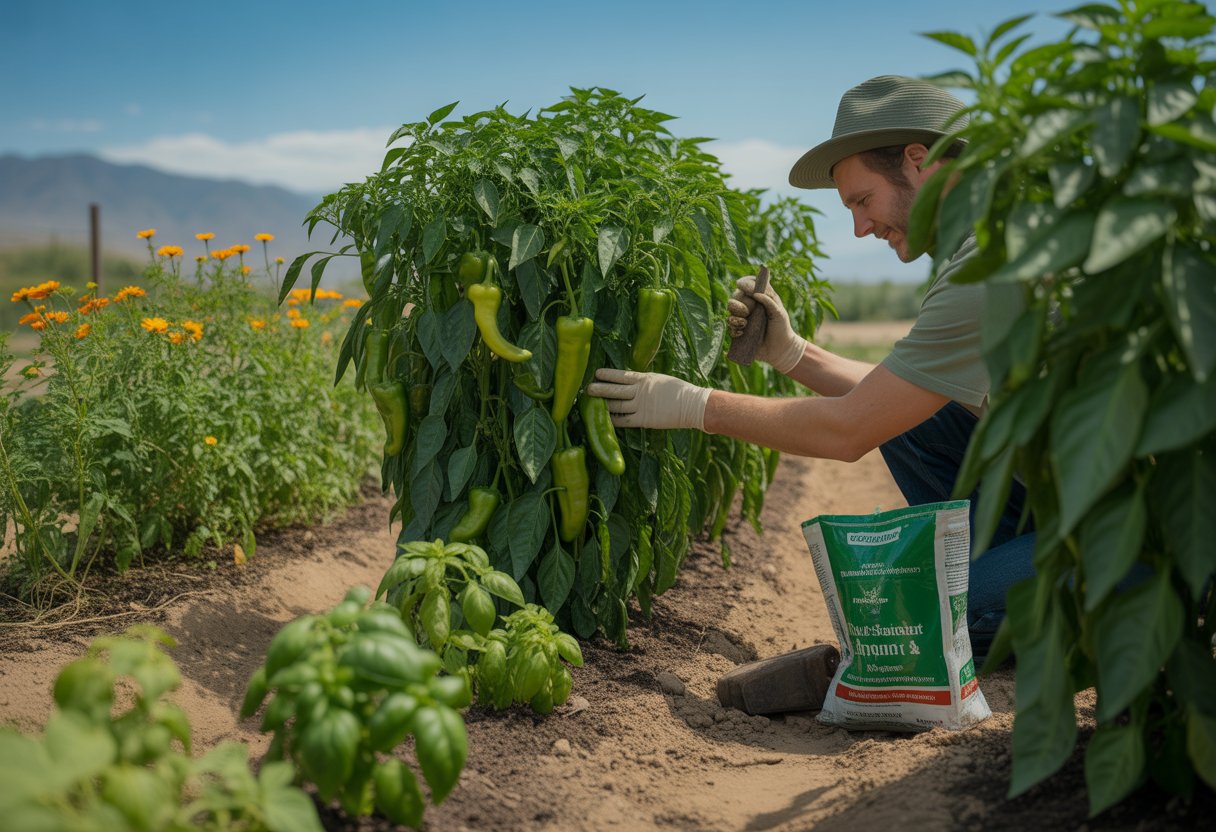
Picking the right neighbors for your peppers and rotating crops helps keep soil healthy and pests under control. Some veggies and herbs really do boost pepper yields, while rotating crops keeps diseases in check.
Beneficial Companion Vegetables and Herbs
Basil’s a classic to plant with peppers—it chases off aphids and supposedly makes peppers taste better. Thyme and oregano are natural repellent herbs that help keep bugs away.
Beans and green peas add nitrogen to the soil, which peppers appreciate. Avoid cabbage or beets nearby—they attract similar pests and hog nutrients.
Tomatoes and eggplants share diseases with peppers, so give them some space. Summer squash and zucchini don’t really cause problems, so you can plant them close.
Crop Rotation to Prevent Disease and Pests
Crop rotation is your best defense against soil-borne diseases like wilt and fungal infections. Wait at least three years before growing peppers in the same spot again.
Rotate peppers with root crops like carrots and beets or legumes like beans and peas. These help restore the soil.
Don’t plant peppers after tomatoes or eggplants since they share a lot of the same problems. That just invites trouble.
Integrating Peppers with Other Garden Crops
Peppers fit nicely into all sorts of garden plans, especially when you pair them with plants that help with pest control or boost the soil. Corn gives a bit of shade and acts as support for climbing beans, which can end up helping peppers that grow nearby.
You can plant asparagus and melons in alternating beds. This setup saves space and, honestly, seems to throw off some pests.
Jalapeños can grow alongside milder peppers if you pay attention to how much space and nutrients each one needs. Tossing in herbs like sage and thyme around your peppers adds a layer of protection all season long.

